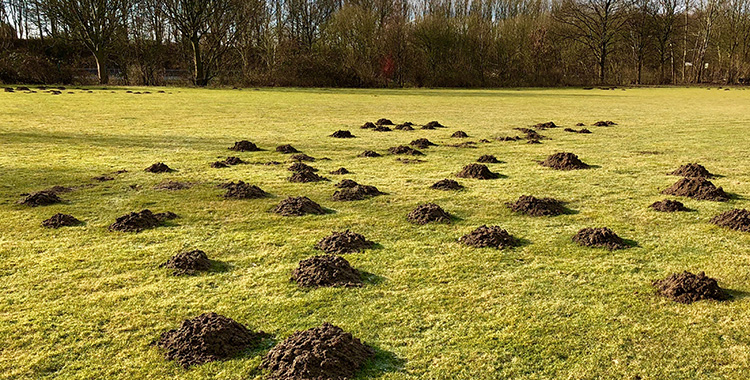If your yard has been looking a little lumpy lately, there’s a chance that it has become a mole motel. While they don’t pose any major threats to you or your property, moles can be a nuisance and can seriously tear up your yard. If you think you may have a mole problem, don’t panic. Here’s what you need to know about identifying, understanding, and removing moles.
How can I identify moles?
With the weather warming up, you’re probably spending more time outside in your yard. Unfortunately, so are a number of unwanted pests. Among the top, warm-weather visitors is the mole. Moles typically live alone, so an acre of land can only support a few of them at a time. Moles use underground tunnel systems to travel throughout your yard in search of food. If your property is host to one or more of these little critters, you’ll likely begin to notice raised trails throughout your yard as well as the signature molehills. Even if you can’t see evidence of moles in your yard, there may be activity going on under the surface.
Why are there moles in my yard?
In the springtime when the ground begins to thaw, mole activity increases. As they begin to seek out food, moles will venture into areas with the most worms, beetles, grubs, and other insects available. If your yard provides a healthy supply of snacks, you just might have a few unwanted dinner guests. As they work their way through your underground buffet, moles will tear up your lawn and wreak havoc on your landscaping’s root system. Moles can be a convenient way of mitigating your property’s insect population—as long as you don’t mind the changes in your lawn’s appearance.
Have a pest problem? We can help!
How can I get rid of moles?
Moles are particularly difficult to eradicate without the help of a professional. There are plenty of traps, poisons, and bait products on the market, but because of the sporadic activity of moles and their extensive tunnel systems, your attempts at removal may be ineffective. Fortunately, there are trained experts who can locate and remove any moles for you. You may also consider incorporating a grub killer into your yard care regimen, as this will decrease the incentive the moles have for seeking out your yard.
If you’re fighting a losing war against moles in your yard, contact the professionals at Springer. Our team of pest control experts can identify the location of active moles and efficiently remove them from your property. Our preventive pest control program can help keep your home and lawn pest-free* no matter what the time of year. Set up a free inspection to learn more about our residential pest control services. When it comes to pest control, you can always trust Springer!


